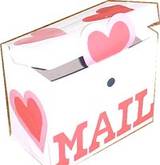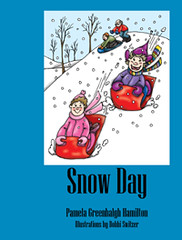Over at BuzzFeed, Leonora Epstein posted 15 Unbelievably Racist Valentine's Day Cards. I'm sharing two of them in this post. Before I do that, though, let's take a look at the subtitle for her post. She writes "This collection of V-Day cards circa 1900 to 1930 or so will make you wish Valentine's Day never existed." With that subtitle, she suggests that times are different. I think she's not paying attention to mascots like the ones for the Washington Redskins or the Cleveland Indians. She must not know about the Gwen Stefani video either.
Let's take a look at two of the cards:
Problems:"Ugh ugh" - I'd love to know who it was that first put down "ugh ugh" as words or speech of Native people!
The headdress itself - One of the common stereotypical ways that a headdress is drawn.
The geometric trim around the heart - I guess this could be traced to textiles Native artists weave on looms. But don't artists from other groups also use looms in creating their woven items?
Wondering about his "give me" line. What do you think about that?
And or course, he is playing Indian. The artist didn't intend you to think the boy is actually Native. That's different (mostly) from the other Valentine's Day cards in the BuzzFeed article...
Here's the second one:
Problems:"How" - Another utterance someone attributed as the way that Indians say hello. You remember it from Disney's Peter Pan?
The headdress - Another of the common ways that a headdress is drawn...
Given her skin tone, we can speculate that the artist meant her to actually be Native, but that's not likely. Like the boy in the card above, she's most likely playing Indian, too.
If you want to see more, check out the ones Adrienne K. has been
posting each year at Native Appropriations. As far as I know, makers of the Valentine's day cards no longer use these stereotypes. I wish authors and illustrators of children's and young adult literature would stop, too!
by Suzanne Lieurance
In February, what child doesn’t enjoy receiving and sending colorful Valentine’s Day cards? And whether children make the cards themselves or simply sign their name to a card they buy, the act of sending and receiving Valentine’s Day cards is one that promotes literacy among young children.
Why?
Because it encourages reading, writing, and even talking about the Valentine’s cards with friends and/or family.

Most children love creating a Valentine Mailbox. They can make a mailbox for school and one for home, too. In fact, at home encourage everyone in the family to build a mailbox and exchange Valentines and other cards, notes, and letters all month long. The mail doesn’t need to stop when March rolls around either. Children will be used to the practice of sending and receiving mail by that time and they probably won’t want to give it up. In March, encourage them to create cards and notes for St. Patrick’s Day.
Of course, there are all sorts of reasons to send mail every single day. And by making it fun for kids to send and receive mail, they start to value the written word more and more. And they are doing so in a way that is “authentic” because they really want to be able to read what that card from their father says, or they want to know how to spell a word correctly in a message they are putting in their sister’s mailbox.

Teachers can also use the mail as a way for children to write about books they read or topics they study in the classroom. Letters or cards can be send from one child to another answering specific questions about a specific book. For example, if kids read Snow Day by Pamela Hamilton (one of the books showcased here this month at the NWFCC), the teacher might ask the class to writer a letter to a friend in class telling who their favorite character was in the book, what they liked best about the book, what they would do differently if they were the writing a book like this, etc. When the children finish writing the letters they can put them in the mailboxes. Later, everyone can read the letters and share them with the class as a class activity.
As a parent or teacher, jot little notes and put them in your children’s or students’ mailboxes throughout the day. If you’re a busy teacher, you don’t have to send a note to every child in your class every day. Just one note a day to one student will do.
It’s also fun if kids can create a mailbox that has a flag that can be raised or lowered when someone puts mail in the box. The raised flag lets the child know “You’ve got mail!”
In the classroom, children can make reading, writing, and distributing the mail a daily practice at a specific time. That way, kids won’t be running around to all the mailboxes at all times of day. They’ll really look forward to the “mail call” part of the day!







What a neat idea. I remember making Valentine’s Day mailboxes with my kids when they were little. I never considered the literacy aspect of it though. Thanks for sharing!
Awww…now there’s some fond memories. I always loved Valentine’s Day at school. Hated being at school but loved Valentine’s Day, lol.
Thanks for suggesting these cute activities for kids!
Great idea. I think it will be a fun activity to do with my grandchildren too.
[...] This post was mentioned on Twitter by Suzanne Lieurance , m_vasquez. m_vasquez said: RT @WritersCoach: Here's an early literacy activity for Valentine's Day & After – http://tinyurl.com/4v8rwao [...]
That’s interesting and fun way to get kids to value reading and writing. I know mine LOVE sending and receiving mail, would definitely be fun to incorporate your idea for the classroom.
This is such a cute idea, and since many of them use products you have around the house anyway, it’s good for the environment too. Fun and learning all in one. Nothing better than that.